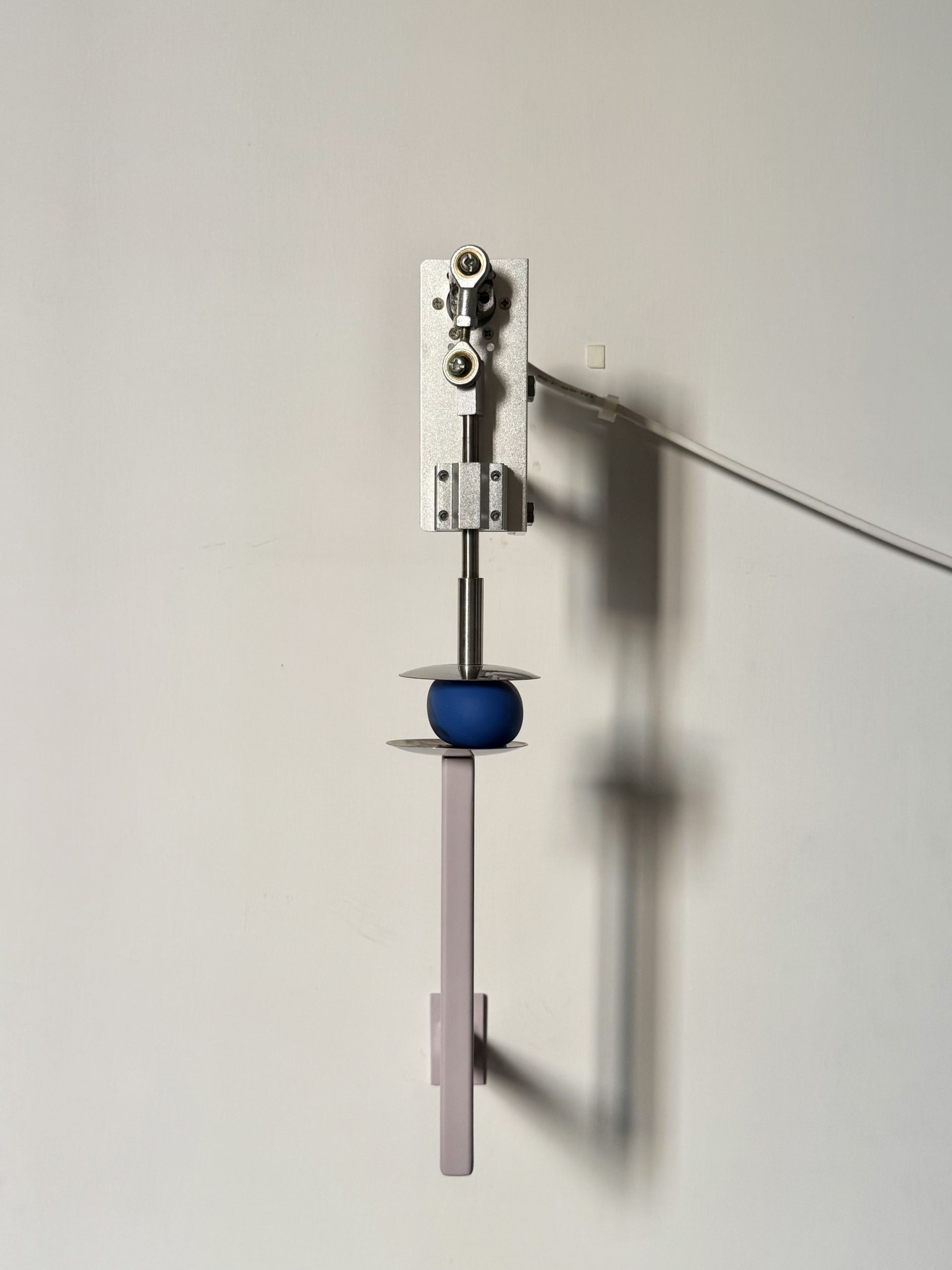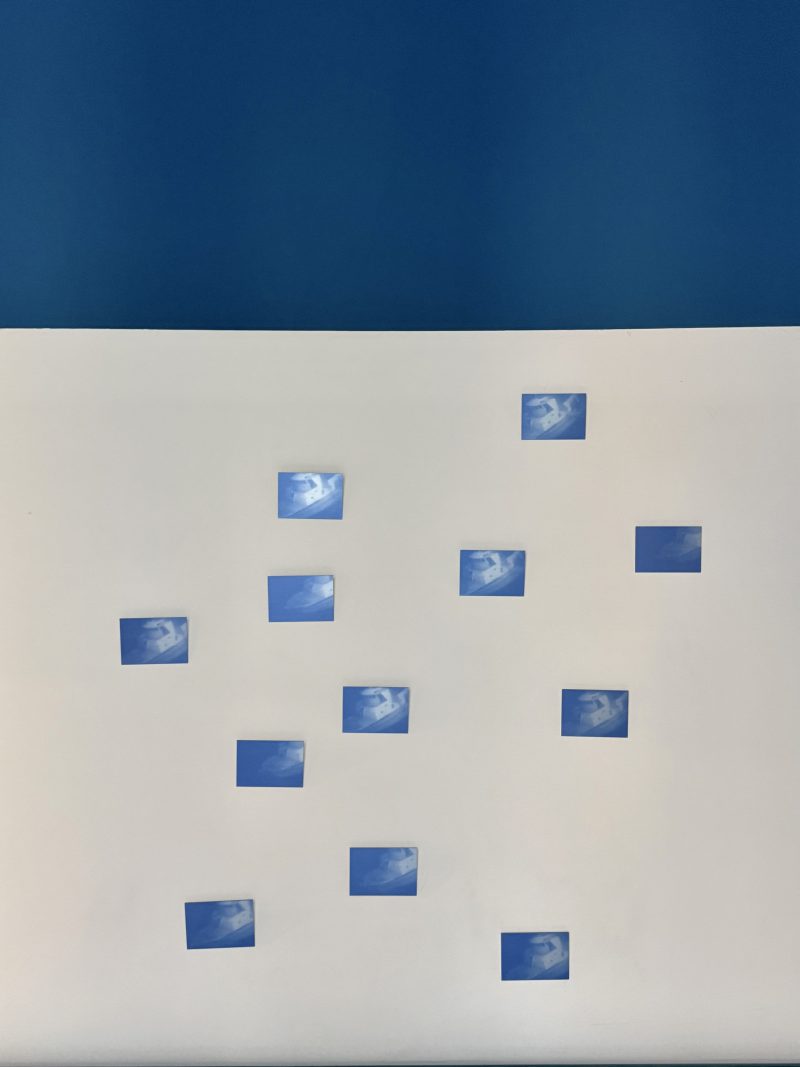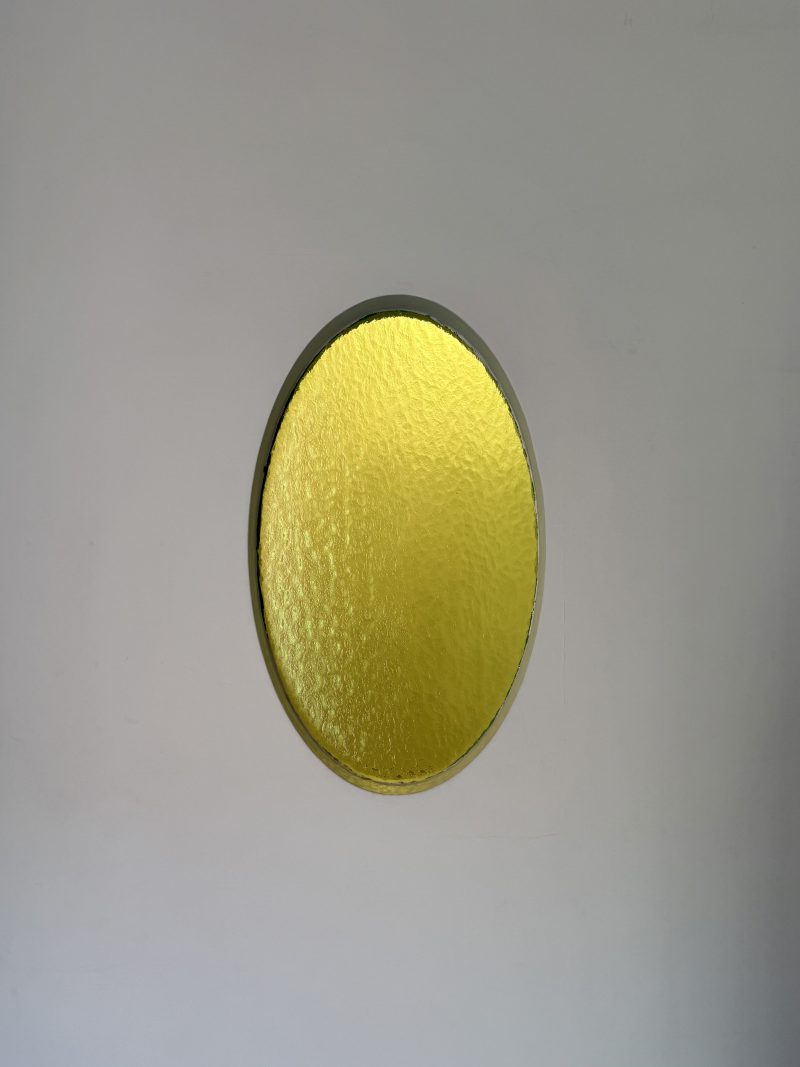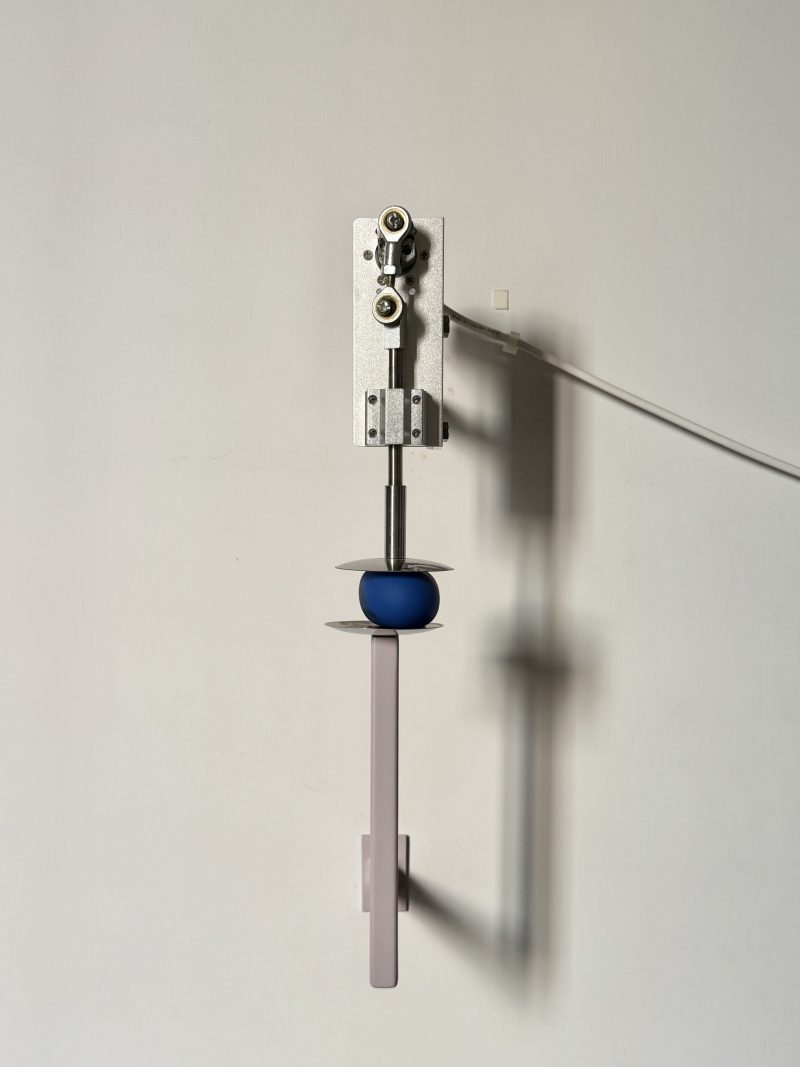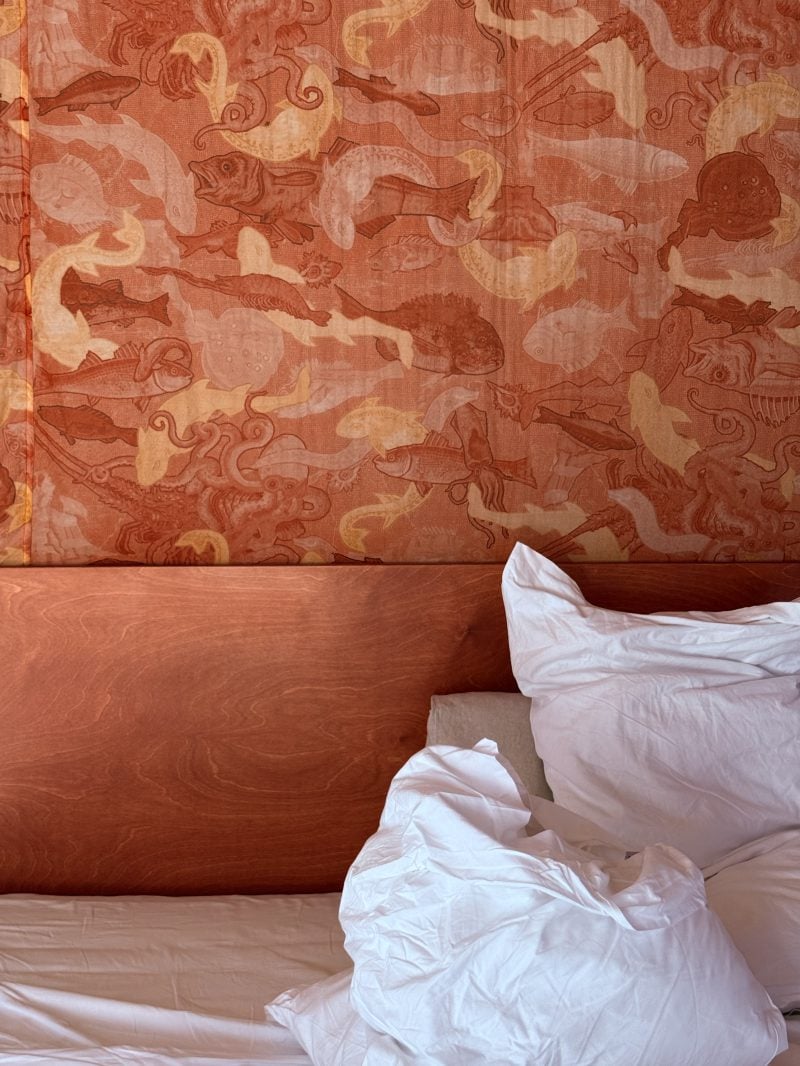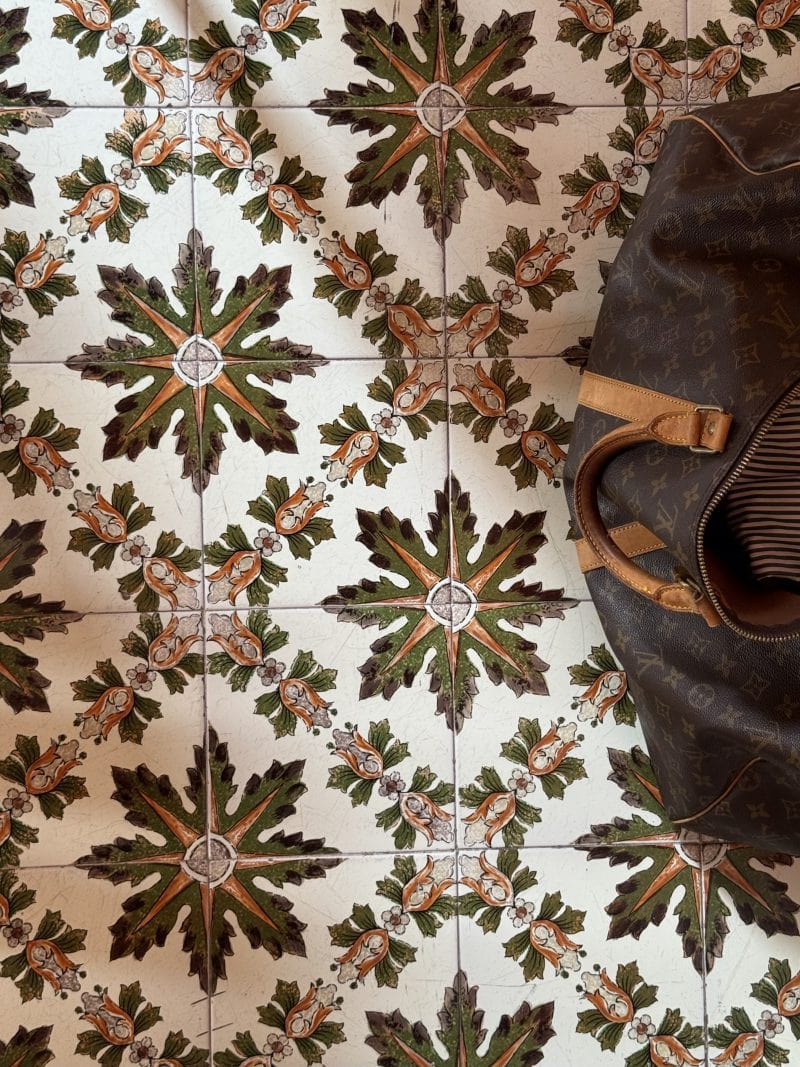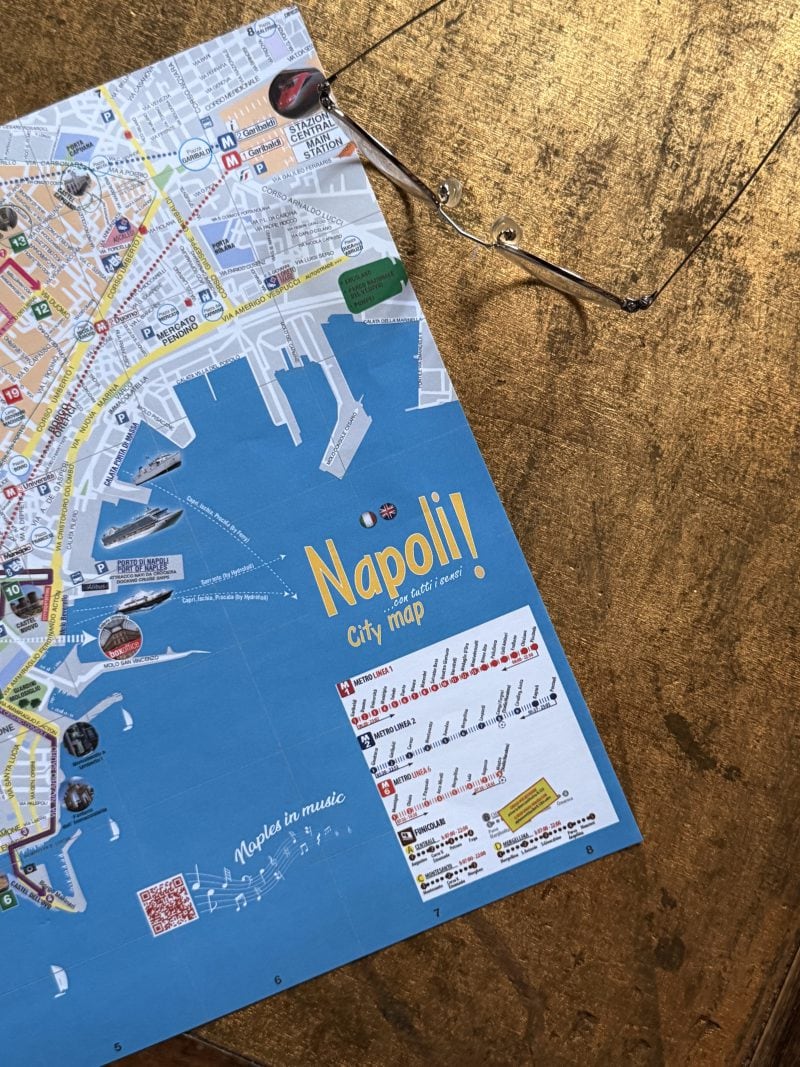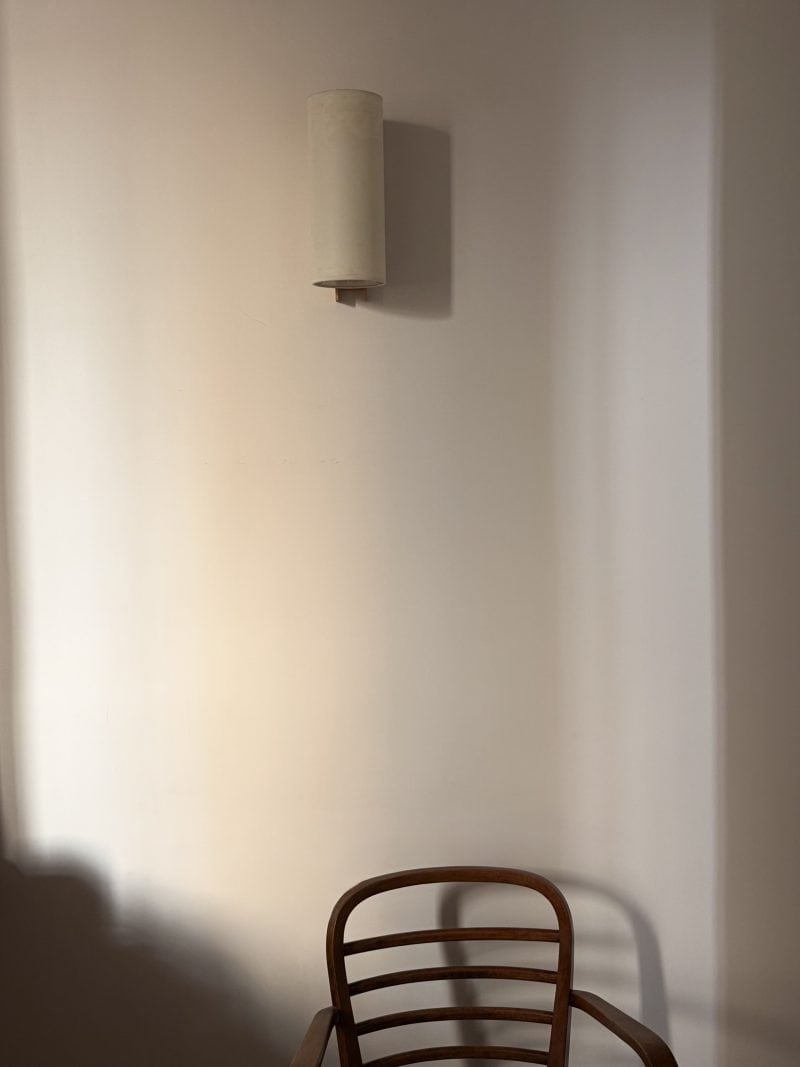Naples is a city that does not unfold — it erupts. It moves in crescendos: the clang of espresso cups, the hum of motorini skimming cobblestones, the faint smell of frying anchovies cutting through the damp air. Life here is improvised yet impeccably choreographed, its rhythm kept by the gestures of its people: hands flying, voices rising, laughter bouncing off faded Baroque facades. To walk through Naples is to feel the pulse of something ancient and unfiltered, where beauty and chaos share the same narrow alleyway.
In the heart of this electric disarray sits SuperOtium, a guesthouse that feels less like a hotel and more like an experiment in coexistence. Housed in a 19th-century apartment overlooking the National Archaeological Museum, it’s both an escape and an insertion; a space where travelers, artists, and thinkers meet the city not as spectators but as participants. The rooms are minimal and fluid, marked by Hypereden’s quiet design language: canopied beds that frame light like a stage, a long communal table that invites conversation. Yet the spirit of the place spills well beyond its walls.
SuperOtium was founded by Nicola Ciancio and Vincenzo Falcione in 2017, not to shelter guests from Naples but to expose them to it. It operates as both residence and refuge, hosting artists and curators from around the world for residencies that always end with a conversation — a talk, an exhibition, a trace left behind. Its very name merges two Latin concepts: Super, meaning “to go beyond,” and Otium, the leisure of creative thought. Here, leisure is not idle; it is generative, porous, alive.
Naples has always been an open studio. Its centuries of artistic production, from Caravaggio’s chiaroscuro to the volcanic ceramics of Capodimonte, have shaped the very grammar of its streets. Even its decay has an aesthetic, each peeling fresco or rusting balcony rail a palimpsest of artistic intent. The city’s history with art is not confined to museums; it seeps into daily life. The Neapolitan gesture, the street shrines, the impromptu theatre of the market — all bear witness to a place where creation is a survival instinct.
In recent years, as global eyes turn once again to the Mediterranean, Naples has reasserted itself as a contemporary cultural hub, not by reinventing itself but by embracing its contradictions. Art here does not seek polish; it seeks truth. It resists curation. You feel it in the independent galleries that open behind unmarked doors, in the underground performances staged in former palazzos, in the dialogue between the city’s rawness and the refinement of those trying to make sense of it. SuperOtium stands at the center of this dialogue — a bridge between visiting visionaries and the restless creative energy that defines Naples today.
In the mornings, guests gather in the kitchen over pastries and thick coffee, their conversations drifting from art theory to the logistics of finding good tomatoes. Outside, the day’s theater begins again: scooters dart through the piazza, old men argue like poets, laundry flaps like flags of defiance above the street. The smell of espresso merges with that of diesel, of dough rising in some unseen kitchen. Naples offers itself with complete transparency; no filters, no pretense, only the raw exchange between human presence and place.
At night, from SuperOtium’s terrace, the city glows unevenly — a constellation of lives layered over centuries. The Acropolis of the Archaeological Museum below feels less like a relic and more like an accomplice. In that view, you can see why artists keep returning: Naples is both muse and mirror, revealing the edges of the self.
To stay at SuperOtium is to surrender to that reflection, to experience Naples as it is — imperfect, magnetic, and alive — and to understand that here, art is not an activity but a condition of being.
